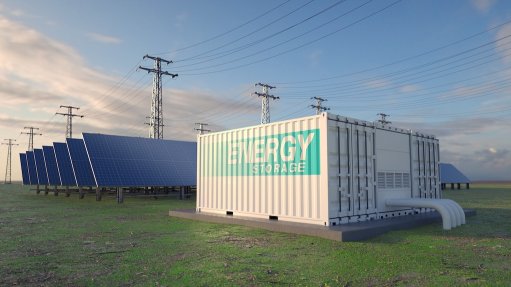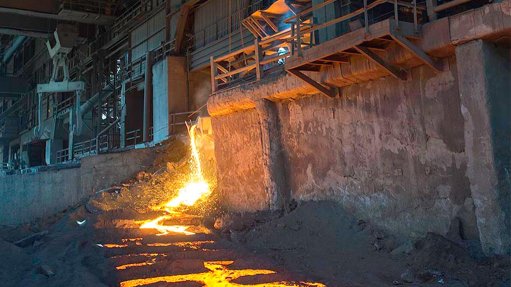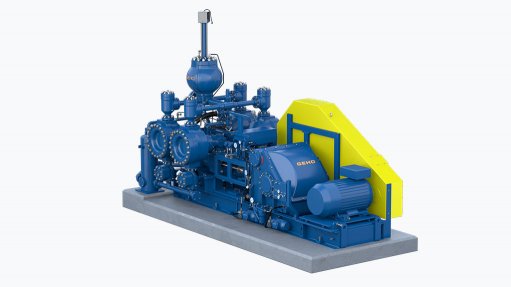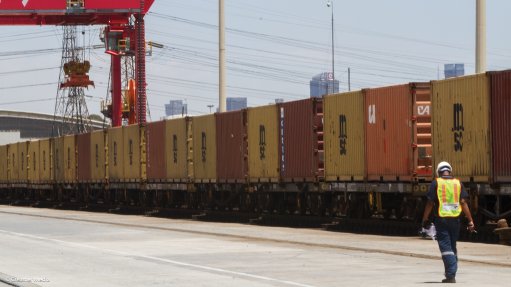Why AI sustainability must be a boardroom priority
This article has been supplied and will be available for a limited time only on this website.
By: Claire Bradbury - Sustainability Lead for Accenture, Africa
AI is no longer just a tool for progress — it’s fast becoming a test of responsibility. As South African companies race to harness artificial intelligence for innovation and growth, few are asking the most critical question: at what environmental cost? Behind every breakthrough model lies a surge in electricity demand, water use, and carbon emissions — realities that can no longer be dismissed as side effects.
This is not a future problem. It’s a now problem. AI is expanding rapidly, and without urgent intervention, its environmental footprint could outpace the very benefits it promises. In a country already grappling with grid instability and water scarcity, South African boardrooms can’t afford to treat AI sustainability as an afterthought. If we’re serious about building a digital future, we must ensure it’s one the planet can sustain.
Across the globe, generative AI is expanding at a blistering pace, bringing with it massive compute demands, energy surges, and water-intensive data centres. Our latest research estimates that by 2030, AI workloads could consume more than 600 terawatt-hours of electricity annually. That’s equivalent to the energy used by hundreds of millions of homes. More troubling still, the water required to cool data centres especially in regions that already face water scarcity could reach crisis levels. In South Africa, we are already living with the twin pressures of unreliable electricity and severe water stress. And yet, local enterprises are racing to adopt AI without asking the crucial question: how sustainable is this growth?
The uncomfortable reality is that if we don’t course-correct now, AI will push us closer to climate instability even as it helps us solve other problems. It’s the ultimate contradiction using a future-forward tool with a 20th-century energy model. That contradiction must be resolved. And it starts with accountability. Every South African organisation that embraces AI must do so with full visibility into the environmental cost and a commitment to minimising it.
At Accenture, we’ve developed a pragmatic solution to this challenge: the Sustainable AI Quotient (SAIQ). It’s not just another ESG checklist. It’s a performance framework that allows companies to evaluate AI investments against four critical thresholds: financial return, energy usage, water dependency, and carbon emissions. In other words, it’s a 360-degree view of AI’s impact, designed to ensure that growth doesn’t come at the planet’s expense. But more than that, it’s a governance tool. It allows CIOs, sustainability heads, and even regulators to track and manage the environmental efficiency of AI across its lifecycle from design to deployment.
If you’re leading an organisation in South Africa today, you should be asking: where are my AI models being trained? What energy sources power my data centres? Am I overtraining models for marginal gains? Do I understand the carbon footprint of my digital infrastructure? If those questions aren’t on your radar yet, they need to be urgently. Because the hidden cost of AI is fast becoming the next frontier in corporate accountability.
Fortunately, the solutions are within reach. Start with smarter silicon. New computer architectures like Processing-In-Memory (PIM) and Compute-In-Memory (CIM) can dramatically reduce the energy intensity of AI operations. Instead of constantly shuttling data between memory and processing units an energy-hungry exercise these chips perform computation directly within memory, cutting power consumption significantly. That’s not a tech detail. That’s a sustainability breakthrough.
Then consider the geography of your data. AI workloads must be located where clean, affordable energy is available. That might mean shifting some operations to regions with high solar penetration or hydro capacity. In South Africa, we can’t afford to run advanced AI models on coal-fired power. It’s inefficient, it’s expensive, and it’s reputationally risky. The next generation of competitive advantage will come from clean compute.
There’s also the matter of design discipline. Too many organisations fall into the trap of experimentation for its own sake running endless AI model iterations that consume resources without yielding proportional value. It’s time to apply restraint. Use AI where it matters. Train models with purpose. Avoid redundant data cycles. This is about thoughtful innovation, not performative digitalism.
And finally, governance. Sustainability in AI cannot be a bolt-on consideration. It must be written into the code. That means deploying governance-as-code frameworks that automate sustainability guardrails, monitor energy thresholds in real-time, and flag violations before they spiral. It means giving your IT and sustainability teams a common language and the tools to enforce it.
South African companies have an opportunity indeed, a responsibility to lead in the design of responsible AI. Our energy grid is fragile. Our climate is under strain. Our water resources are finite. But we also have some of the world’s most creative technologists, a growing green finance movement, and an emerging generation of sustainability-savvy consumers. We can be the continent that shows how to scale AI responsibly, equitably, and profitably.
The AI decisions we make in the next 24 months will determine whether we lock in a high-carbon future or build the foundation for sustainable digital transformation. That’s the fork in the road. South African businesses must partner with experts who understand both sides of the equation innovation and impact. Because only those who balance the promise of AI with the principles of sustainability will be truly future-ready.
Comments
Press Office
Announcements
What's On
Subscribe to improve your user experience...
Option 1 (equivalent of R125 a month):
Receive a weekly copy of Creamer Media's Engineering News & Mining Weekly magazine
(print copy for those in South Africa and e-magazine for those outside of South Africa)
Receive daily email newsletters
Access to full search results
Access archive of magazine back copies
Access to Projects in Progress
Access to ONE Research Report of your choice in PDF format
Option 2 (equivalent of R375 a month):
All benefits from Option 1
PLUS
Access to Creamer Media's Research Channel Africa for ALL Research Reports, in PDF format, on various industrial and mining sectors
including Electricity; Water; Energy Transition; Hydrogen; Roads, Rail and Ports; Coal; Gold; Platinum; Battery Metals; etc.
Already a subscriber?
Forgotten your password?
Receive weekly copy of Creamer Media's Engineering News & Mining Weekly magazine (print copy for those in South Africa and e-magazine for those outside of South Africa)
➕
Recieve daily email newsletters
➕
Access to full search results
➕
Access archive of magazine back copies
➕
Access to Projects in Progress
➕
Access to ONE Research Report of your choice in PDF format
RESEARCH CHANNEL AFRICA
R4500 (equivalent of R375 a month)
SUBSCRIBEAll benefits from Option 1
➕
Access to Creamer Media's Research Channel Africa for ALL Research Reports on various industrial and mining sectors, in PDF format, including on:
Electricity
➕
Water
➕
Energy Transition
➕
Hydrogen
➕
Roads, Rail and Ports
➕
Coal
➕
Gold
➕
Platinum
➕
Battery Metals
➕
etc.
Receive all benefits from Option 1 or Option 2 delivered to numerous people at your company
➕
Multiple User names and Passwords for simultaneous log-ins
➕
Intranet integration access to all in your organisation





















